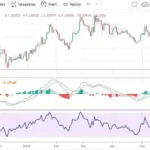Artificial Intelligence (AI) is reshaping the way investors analyze, interpret, and predict stock market movements. Once driven primarily by human intuition and traditional financial models, the world of investing is now increasingly powered by algorithms capable of processing massive amounts of data in real time. From detecting subtle market trends to automating trades, AI is transforming stock market predictions in ways once thought impossible.
1. The Rise of Data-Driven Investing
The stock market produces vast amounts of data every second—prices, volumes, financial statements, social media sentiment, and even global news. Traditional analysis methods can’t keep up with this flood of information, but AI thrives on it.
AI systems, especially those powered by machine learning (ML), can identify hidden patterns within large datasets that human analysts might overlook. By learning from past trends, AI models can forecast future market behavior with increasing accuracy, allowing investors to make faster and more informed decisions.
2. Machine Learning Models in Market Forecasting
Machine learning has become a key tool for stock market prediction. Algorithms like neural networks, decision trees, and reinforcement learning models analyze historical price data to recognize relationships between variables that influence stock movements.
For instance:
- Neural networks mimic the way the human brain processes information, identifying non-linear patterns in price data.
- Reinforcement learning allows algorithms to “learn” from their successes and mistakes in simulated trading environments.
- Sentiment analysis uses natural language processing (NLP) to gauge market mood by analyzing news headlines, earnings reports, and even tweets.
These technologies enable predictions that are not only faster but often more nuanced than traditional statistical models.
3. High-Frequency and Algorithmic Trading
AI has also revolutionized high-frequency trading (HFT), where computers execute thousands of trades in milliseconds. By using AI to detect minute market inefficiencies, traders can exploit opportunities long before human investors even notice them.
Algorithmic trading systems powered by AI can adapt to changing market conditions in real time—an advantage that’s especially valuable during volatile periods. However, while this speed and precision can boost profits, it also raises concerns about market instability and the potential for automated “flash crashes.”
4. Predictive Analytics and Sentiment Tracking
Beyond price movements, AI excels at predictive analytics—forecasting future events based on current trends. Many hedge funds and investment firms now integrate AI tools that track public sentiment, political events, and even weather data to anticipate market reactions.
For example, a surge in negative sentiment about a company on social media might trigger AI systems to anticipate a potential stock drop, prompting early portfolio adjustments. This integration of alternative data gives investors an edge in understanding the broader forces shaping the market.
5. The Human Element Still Matters
Despite its sophistication, AI is not infallible. Market predictions are inherently uncertain, and AI models can still be influenced by biased data, unexpected global events, or black swan scenarios—rare but high-impact occurrences that defy algorithmic logic.
Moreover, emotional and psychological factors continue to play a significant role in financial markets. While AI can analyze sentiment, it cannot fully replicate human intuition or account for irrational investor behavior. Therefore, the best results often come from a hybrid approach, where AI tools support—but don’t replace—human judgment.
6. Ethical and Regulatory Considerations
The growing influence of AI in finance also brings challenges. Questions about data privacy, algorithmic transparency, and fair access are becoming increasingly important. Regulators are exploring how to ensure AI-driven trading does not distort markets or disadvantage smaller investors.
As AI continues to evolve, balancing innovation with ethical responsibility will be crucial to maintaining trust and stability in global financial systems.
7. The Future of AI in Market Predictions
The next frontier of AI in finance lies in explainable AI (XAI)—models that can clearly show how they arrive at specific predictions. This transparency will be vital for both regulators and investors seeking to understand AI’s decision-making process.
In addition, the integration of quantum computing could further enhance AI’s predictive capabilities, enabling models to analyze even more complex data sets at unprecedented speeds.
Conclusion
The impact of AI on stock market predictions is profound and far-reaching. By combining data analysis, automation, and machine learning, AI is enabling more accurate forecasts and efficient trading strategies. However, while technology enhances decision-making, it doesn’t eliminate uncertainty. The smartest investors will use AI not as a crystal ball, but as a powerful tool—one that complements human insight in navigating the ever-evolving financial landscape.














